- Home›
- Healthy Living›
- International Yoga Day 2023: 7 Yoga Asanas To Keep Your Kidney Healthy
International Yoga Day 2023: 7 Yoga Asanas To Keep Your Kidney Healthy
By: Pinki Mon, 19 June 2023 1:49:17
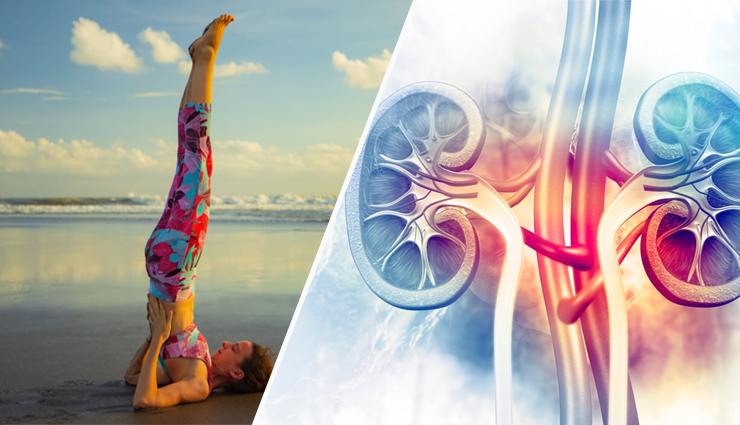
International Yoga Day is celebrated on June 21st every year to highlight the numerous benefits of yoga for physical, mental, and spiritual well-being. One area of health that can greatly benefit from yoga practice is kidney health. The kidneys play a crucial role in filtering waste products from the blood, regulating fluid balance, and maintaining overall health. By incorporating specific yoga asanas into your routine, you can support the health and function of your kidneys. Here are 7 yoga asanas that can help keep your kidneys healthy:
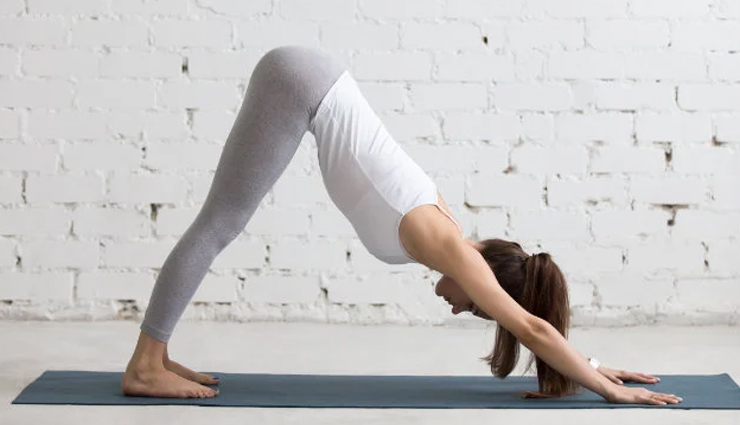
# Adho Mukha Svanasana (Downward-Facing Dog Pose)
This pose improves blood circulation, stimulates the kidneys, and helps release tension in the lower back.
Steps to Practice Adho Mukha Svanasana (Downward-Facing Dog Pose):
- Start on your hands and knees, with your hands shoulder-width apart and your knees hip-width apart. Your wrists should be positioned under your shoulders, and your knees under your hips.
- Spread your fingers wide and press your palms firmly into the mat.
- Tuck your toes under and exhale as you lift your knees off the ground, straightening your legs.
- Begin to lift your hips upward, moving them toward the ceiling, while keeping your arms and legs straight.
- Engage your core muscles and lengthen your spine, creating a straight line from your hands to your tailbone.
- Press your heels toward the floor, but don't worry if they don't touch. The goal is to create length and extension in your spine.
- Relax your neck and allow your head to hang naturally between your arms. Your gaze should be directed toward your feet or your navel.
- Take slow, deep breaths as you hold the pose for a few breaths or as long as comfortable.
- To release the pose, exhale and lower your knees back down to the mat, returning to the starting position.
Precautions:
- If you have any wrist injuries or conditions such as carpal tunnel syndrome, place a folded blanket or towel under your palms to provide extra support and cushioning.
- If you have high blood pressure or are experiencing a headache, it is advisable to practice this pose with caution and avoid holding it for an extended period.
- If you have any neck or shoulder injuries, keep your head aligned with your arms rather than looking up toward your feet.
- If you're in the later stages of pregnancy or have any abdominal discomfort, you can modify the pose by resting your knees on a bolster or folded blanket for support.
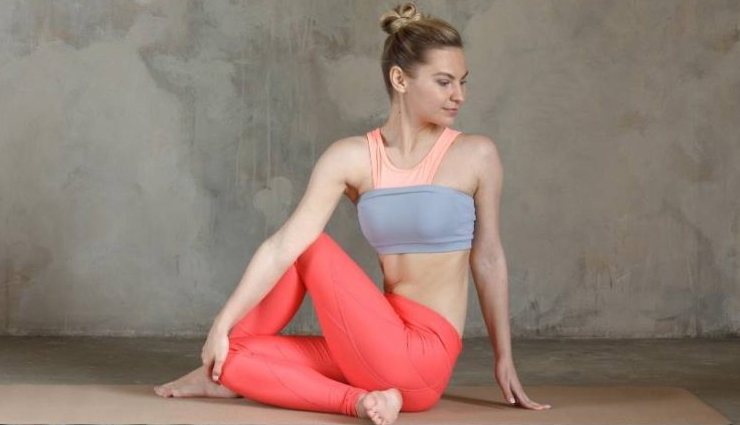
Ardha Matsyendrasana (Half Spinal Twist Pose):
This pose stimulates the kidneys, improves digestion, and enhances spinal flexibility.
Steps to Practice Ardha Matsyendrasana (Half Spinal Twist Pose):
- Start by sitting on the floor with your legs extended in front of you.
- Bend your right knee and place your right foot flat on the floor, close to your left thigh.
- Keep your left leg extended and your left foot flexed.
- Inhale and lift your left arm straight up towards the ceiling.
- As you exhale, twist your torso to the right, bringing your left arm across your right knee.
- Place your left elbow on the outside of your right knee, using it as a leverage to deepen the twist.
- Keep your spine long and tall, and gaze over your right shoulder.
- You can either keep your right hand on the floor behind you for support or bring it around your back to hold your left thigh.
- Hold the pose for a few breaths, feeling the twist in your spine.
- To release the pose, slowly unwind the twist and return to the starting position.
- Repeat the same steps on the other side, bending your left knee and twisting to the left.
Precautions:
- Avoid this pose if you have any recent or chronic back, hip, or knee injuries. Instead, consult with a qualified yoga instructor for modifications or alternative poses that suit your condition.
- If you have any current or previous spinal issues, practice this pose with caution and listen to your body's limits. Avoid forcing the twist too deep and prioritize maintaining a comfortable and pain-free position.
- Pregnant women should avoid deep twisting poses or practice them under the guidance of a prenatal yoga instructor.
- If you experience any dizziness, lightheadedness, or discomfort in the neck, release the pose immediately and return to a neutral position.
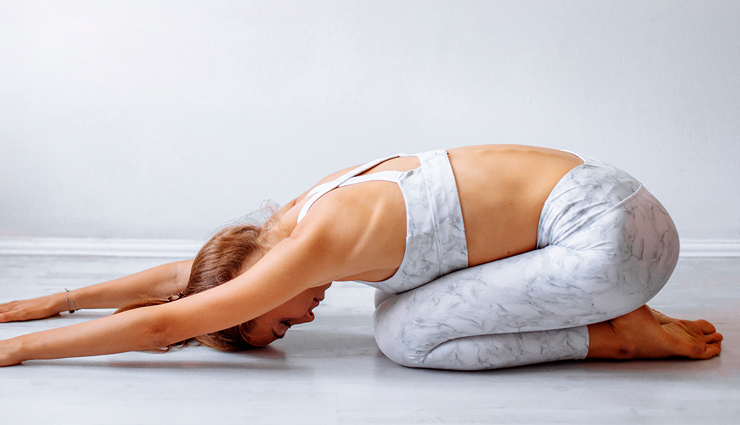
Balasana (Child's Pose):
Balasana promotes relaxation, reduces stress, and helps release tension in the lower back and kidneys.
Steps to Practice Balasana (Child's Pose)
- Start by kneeling on the floor. Sit back on your heels, keeping your knees slightly apart.
- Exhale and gently lower your torso forward, bringing your forehead to the floor. If your forehead doesn't reach the floor, you can rest it on a yoga block or a folded blanket.
- Extend your arms forward, placing them on the floor alongside your body with your palms facing down. Alternatively, you can bring your arms back alongside your legs, palms facing up.
- Relax your shoulders and let them soften away from your ears. Allow your whole body to sink towards the floor.
- Take slow, deep breaths, allowing your breath to flow into your back and feel the gentle expansion of your ribcage.
- Stay in this pose for as long as feels comfortable, taking rest and finding stillness in the pose.
Precautions:
- If you have knee or ankle injuries or discomfort, you can place a folded blanket or a bolster between your buttocks and your heels to provide support and reduce strain on the joints.
- If you have high blood pressure, it is advisable to keep your forehead resting on a block or blanket instead of directly on the floor to avoid any extra pressure on the head.
- If you have any hip or back injuries or conditions, modify the pose by keeping your knees wider apart or placing a bolster or folded blanket under your torso for added support and comfort.
- Pregnant women can practice Balasana with their knees wide apart to accommodate the growing belly and find comfort.
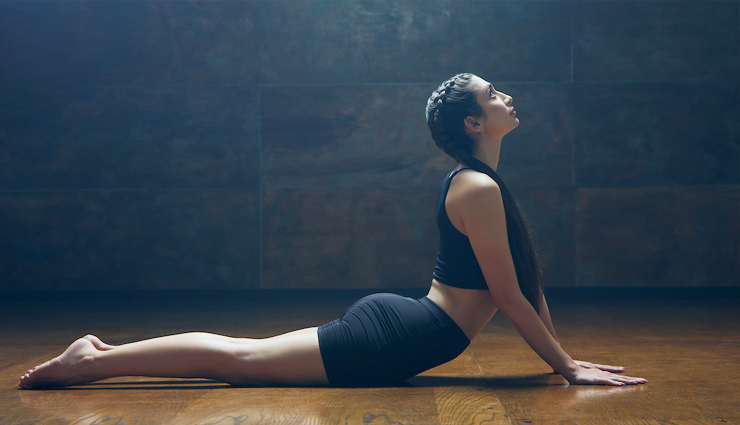
Bhujangasana (Cobra Pose):
Cobra Pose stretches the abdominal muscles, stimulates the kidneys, and improves blood circulation in the lower back.
Steps to Practice Bhujangasana (Cobra Pose):
- Start by lying flat on your stomach on a yoga mat or a comfortable surface.
- Place your hands on the mat beside your shoulders, fingers spread wide and pointing forward.
- Press your palms firmly into the mat, engaging your arm muscles.
- As you inhale, slowly lift your head, chest, and upper abdomen off the mat. Keep your lower abdomen and hips grounded.
- Straighten your arms as much as possible without locking your elbows. Keep your shoulders relaxed and away from your ears.
- Roll your shoulders back and down, opening your chest and lifting your heart forward.
- Lengthen your neck and gaze forward or slightly upward, avoiding any strain in the neck.
- Keep your legs extended and the tops of your feet pressing into the mat.
- Hold the pose for a few breaths, maintaining a steady and comfortable stretch in the spine.
- To release, exhale and slowly lower your torso back down to the mat.
Precautions:
- Avoid practicing Bhujangasana if you have any recent or chronic back injuries, such as herniated discs or severe lower back pain. Instead, consult with a qualified yoga instructor or healthcare professional for appropriate modifications or alternative poses.
- If you are pregnant, practice Bhujangasana with caution. Keep the pose gentle and avoid any pressure on the belly. It is advisable to practice under the guidance of a prenatal yoga instructor.
- If you have carpal tunnel syndrome or wrist pain, you can modify the pose by resting on your forearms instead of fully extending your arms.
- Do not force your body into a deep backbend or strain the neck. Focus on maintaining a lengthened spine and a comfortable stretch.
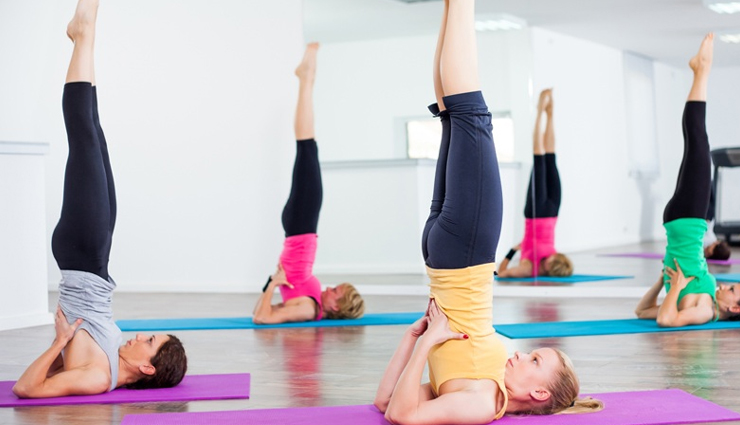
Salamba Sarvangasana (Supported Shoulderstand):
Supported Shoulderstand improves blood circulation, reduces fluid retention, and supports kidney health.
Steps to Practice Salamba Sarvangasana (Supported Shoulderstand):
- Begin by lying on your back with your arms resting alongside your body, palms facing down.
- Bend your knees and bring your feet close to your buttocks, keeping them hip-width apart.
- Place your palms on the floor beside your hips, fingers pointing toward your feet.
- Press your palms firmly into the floor and use your arms and core strength to lift your legs and hips off the ground, coming into a shoulderstand.
- Support your lower back with your hands, keeping your elbows shoulder-width apart.
- Straighten your legs, pointing your toes toward the ceiling. Maintain a straight line from your shoulders to your heels.
- Keep your neck and head in a neutral position, avoiding any strain or excessive pressure on the neck. If necessary, place a folded blanket or yoga block under your shoulders for additional support.
- Breathe deeply and hold the pose for several breaths, aiming to stay in the pose for a comfortable duration.
- To come out of the pose, slowly lower your legs and hips back down to the ground with control. Gently release your hands and lie flat on your back.
Precautions:
- Avoid practicing Salamba Sarvangasana if you have any neck or shoulder injuries or conditions. Instead, consult with a qualified yoga instructor or healthcare professional for appropriate modifications or alternative poses.
- If you have high blood pressure, glaucoma, or any other eye conditions, it is recommended to avoid full inversion poses like Supported Shoulderstand. Alternatively, you can practice a modified version, such as Half Shoulderstand, under the guidance of an experienced instructor.
- Women who are menstruating or pregnant should avoid practicing full Shoulderstand. Instead, consult with a prenatal yoga instructor or healthcare professional for suitable alternatives.
- If you have any serious medical conditions or are unsure about your ability to practice this pose, seek guidance from a qualified yoga teacher or healthcare professional.
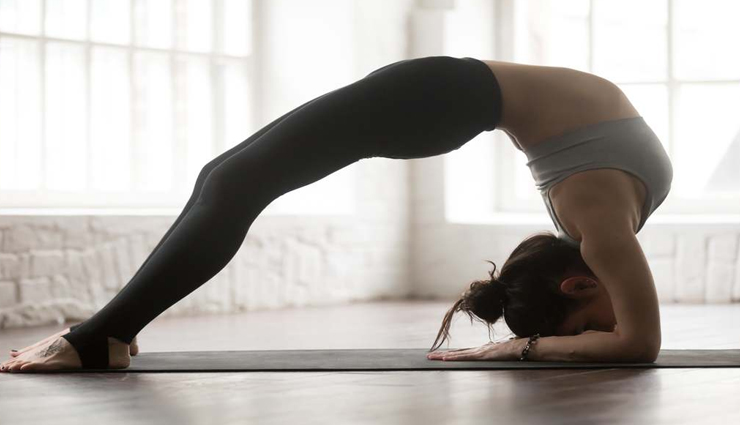
# Setu Bandhasana (Bridge Pose)
Bridge Pose stretches the abdominal muscles, stimulates the kidneys, and improves digestion.
Steps to Practice Setu Bandhasana (Bridge Pose):
- Start by lying flat on your back on a yoga mat, with your knees bent and feet hip-width apart, flat on the mat.
- Place your arms alongside your body, with your palms facing down.
- Press your feet firmly into the mat as you engage your glutes and core muscles.
- On an inhalation, slowly lift your hips off the mat, rolling your spine up one vertebra at a time.
- Keep your shoulders grounded and press your upper arms into the mat for support.
- Interlace your fingers underneath your body, extending your arms and pressing your palms together.
- Lengthen through your tailbone and engage your thighs to maintain a straight line from your knees to your shoulders.
- Relax your neck and gaze straight ahead or gently towards your chest.
- Hold the pose for a few breaths, focusing on the opening of the chest and the stretch in the front of the body.
- To release, gently roll down the spine, one vertebra at a time, until your back is flat on the mat.
Precautions:
- If you have any neck or shoulder injuries or conditions, it is advisable to keep your arms alongside your body instead of interlacing the fingers. Alternatively, you can use a yoga strap or keep your palms flat on the mat for support.
- Avoid practicing Setu Bandhasana if you have any recent or chronic lower back injuries or pain. Instead, consult with a qualified yoga instructor or healthcare professional for appropriate modifications or alternative poses.
- If you have high blood pressure, glaucoma, or any other eye conditions, it is recommended to practice Bridge Pose with caution. Keep your gaze straight ahead or downwards, and avoid straining or compressing the neck.
- If you are pregnant, it is advisable to practice Setu Bandhasana with caution and under the guidance of a prenatal yoga instructor. Modify the pose by placing a bolster or folded blanket under your hips for support.
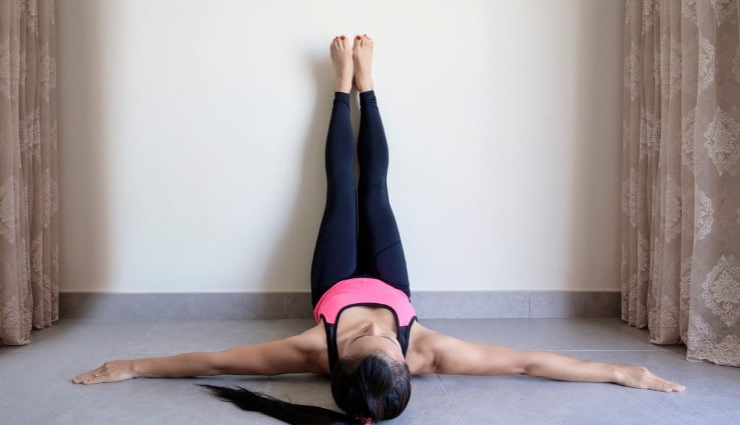
# Viparita Karani (Legs-Up-The-Wall Pose)
Legs-Up-The-Wall Pose promotes relaxation, improves blood circulation to the kidneys, and reduces fluid retention.
Steps to Practice Viparita Karani (Legs-Up-The-Wall Pose):
- Find a clear wall space and sit with one side of your body touching the wall.
- Begin by slowly lying down on your back and swinging your legs up against the wall. Your buttocks should be as close to the wall as possible.
- Adjust your position so that your legs are straight up the wall, with your feet relaxed and your heels touching the wall. Your arms can rest by your sides, palms facing up.
- Allow your body to relax completely into the pose. Close your eyes and take slow, deep breaths.
- Stay in this pose for 5 to 15 minutes, or longer if you feel comfortable. Focus on deepening your breath and letting go of tension in your body.
Precautions:
- If you have any serious back or neck injuries or conditions, it is advisable to avoid this pose or practice it under the guidance of a qualified yoga instructor.
- If you have high blood pressure, glaucoma, or any other eye conditions, it is recommended to avoid practicing Viparita Karani. Instead, consult with a healthcare professional or yoga instructor for suitable alternatives.
- Pregnant women should approach this pose with caution, especially in the later stages of pregnancy. It is advisable to consult with a prenatal yoga instructor or healthcare professional for appropriate modifications.
- If you have any discomfort or pain in your lower back or legs during the pose, you can place a folded blanket or bolster under your hips for additional support and elevation.
- Avoid straining or forcing your body into the pose. Listen to your body's limits and adjust accordingly.





